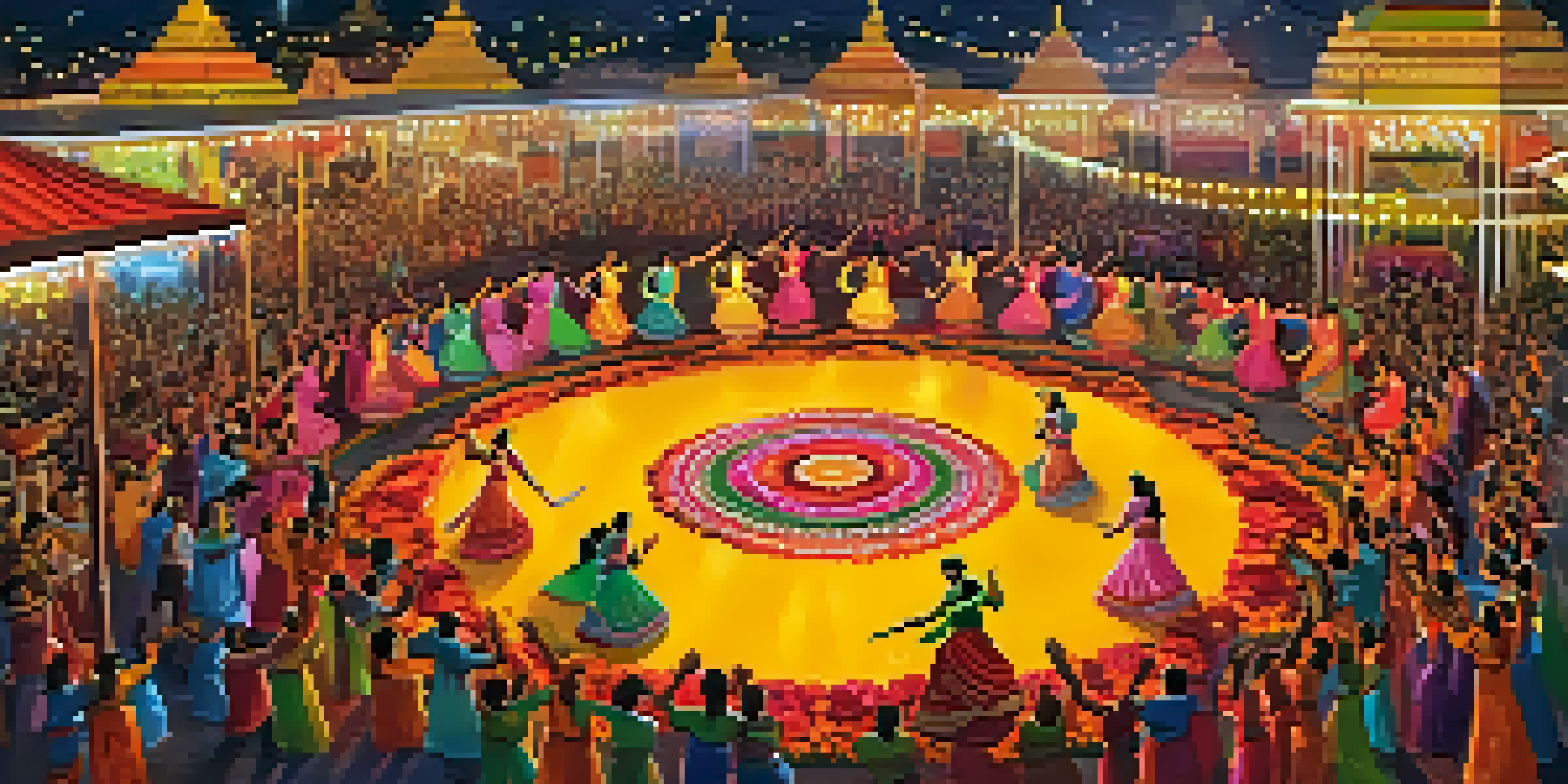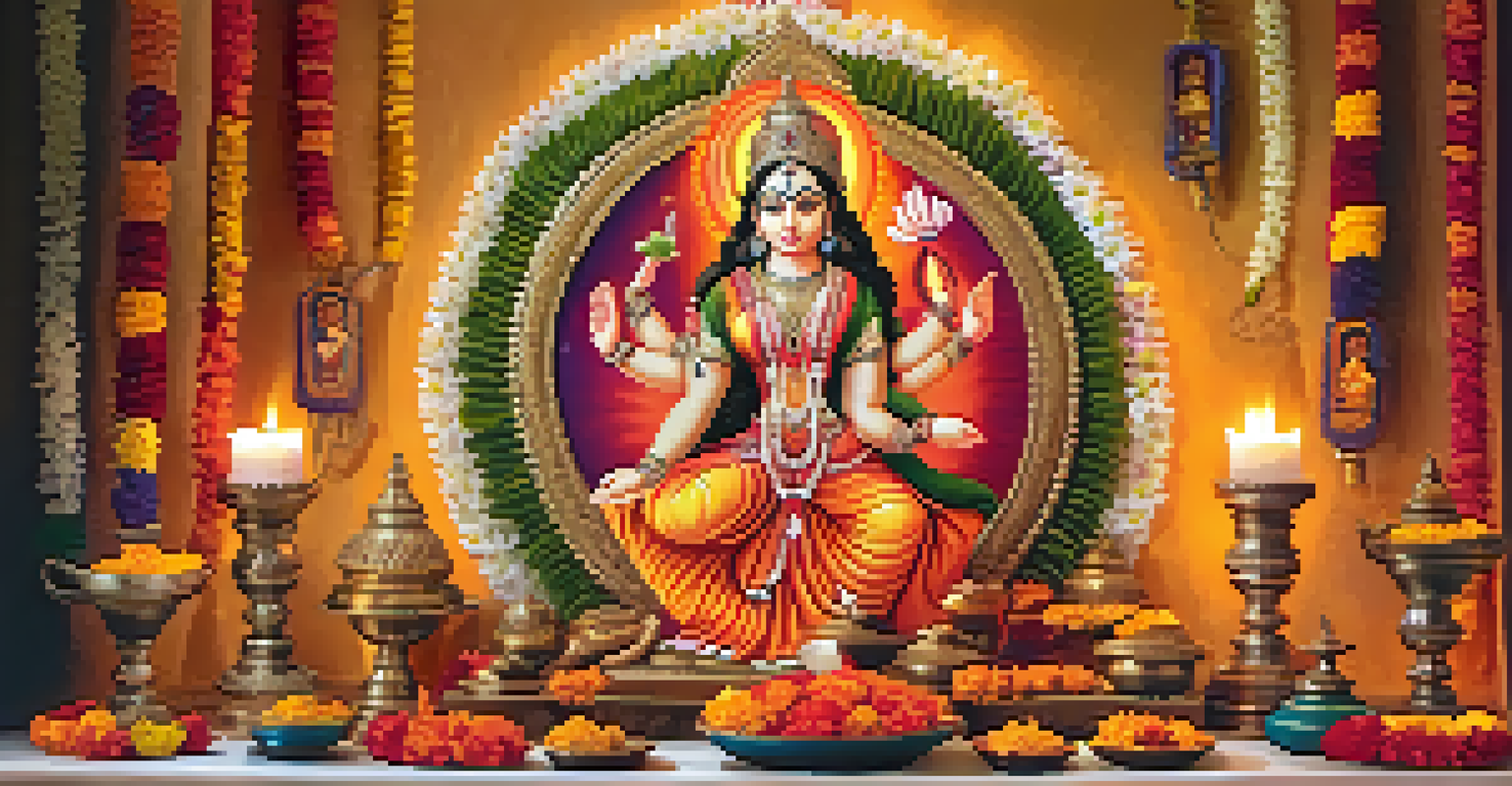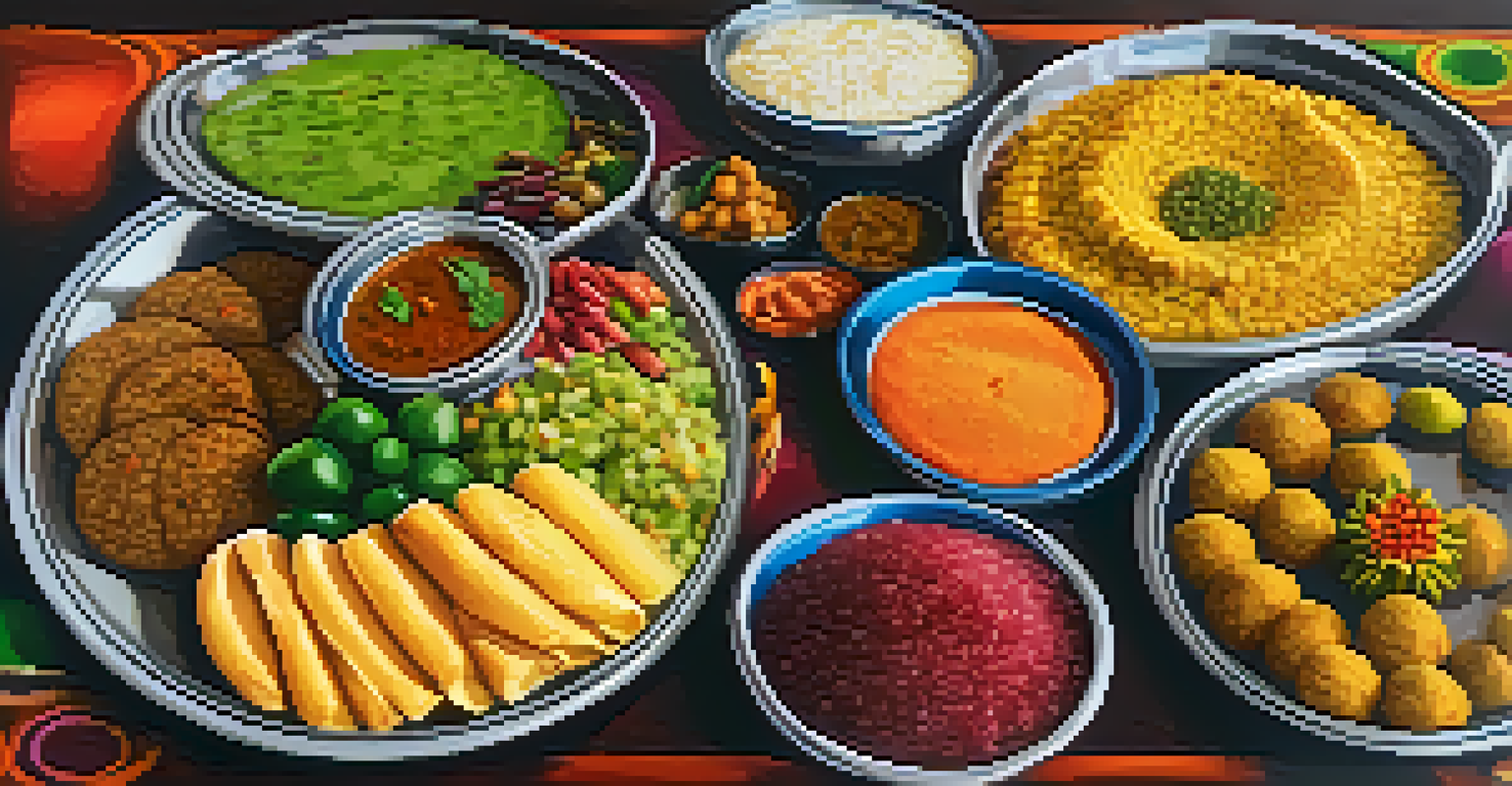Navratri: Celebrating Light and Goodness Over Evil

Understanding Navratri: A Festival of Nine Nights
Navratri, meaning 'nine nights' in Sanskrit, is a significant Hindu festival dedicated to the worship of the goddess Durga. Every year, it is celebrated with great fervor, typically in September or October, depending on the lunar calendar. The festival symbolizes the victory of good over evil, reflecting the timeless battle between light and darkness.
The greatest victory is that which requires no battle.
During these nine nights, devotees engage in various rituals, prayers, and cultural performances. Each day is associated with different forms of the goddess, allowing worshippers to connect with diverse aspects of femininity and strength. This multifaceted celebration serves not only to honor the divine but also to promote community spirit.
Navratri is not just a religious observance; it’s a vibrant cultural event that brings people together. From traditional dances like Garba and Dandiya to elaborate decorations and festive feasts, each aspect enhances the joyous atmosphere. It's a time for families and friends to unite, share stories, and create lasting memories.
The Significance of Goddess Durga in Navratri
At the heart of Navratri is the revered goddess Durga, a symbol of power and resilience. She embodies the qualities of courage, compassion, and wisdom, inspiring millions to seek strength in their own lives. Her fierce form, depicted riding a lion or tiger, represents her ability to combat evil forces.

Durga's story is rooted in the Hindu epic, where she battles the buffalo demon Mahishasura, who symbolizes ignorance and malevolence. Her victory over him is celebrated during Navratri, reminding devotees that good ultimately triumphs over evil. This narrative encourages individuals to confront their inner challenges and strive for personal growth.
Navratri: A Celebration of Community
Navratri fosters a sense of unity and togetherness, bringing people from diverse backgrounds together to celebrate shared traditions.
Worshipping Durga during Navratri is a way for devotees to seek her blessings for strength and protection. Many observe fasting and perform rituals to purify their minds and bodies. This connection to the goddess fosters a sense of hope and empowerment, resonating deeply within the hearts of those who participate.
Rituals and Traditions During Navratri
Navratri is marked by a rich tapestry of rituals and traditions that vary across regions. Common practices include setting up an altar, known as 'Golu' in South India, where images of the goddess and other deities are displayed. This visual celebration invites reflection and reverence, enhancing the spiritual atmosphere.
Unity is strength... when there is teamwork and collaboration, wonderful things can be achieved.
Fasting is another important aspect of Navratri, with many devotees choosing to abstain from specific foods as a form of discipline and devotion. These fasts can range from complete abstinence to avoiding certain ingredients, depending on personal beliefs. The act of fasting not only purifies the body but also heightens spiritual awareness.
In addition to rituals, vibrant dance forms such as Garba and Dandiya are integral to the celebration. These dances, performed in circles, symbolize community and joy, allowing participants to express their devotion through movement. The rhythmic clapping and lively music create an infectious energy, drawing everyone into the festivities.
Navratri and the Power of Community
One of the most beautiful aspects of Navratri is its ability to foster a sense of community. People from different backgrounds come together to celebrate, breaking down barriers and building connections. This collective spirit enhances the overall experience, making the festival not just a personal journey but a shared celebration.
Local gatherings often feature food stalls, cultural performances, and community prayers, creating a festive environment where everyone is welcome. These communal activities strengthen bonds and promote a sense of belonging, reminding us of the importance of unity in diversity. It's a beautiful example of how shared traditions can bring people closer.
Goddess Durga: Symbol of Strength
The festival honors Goddess Durga, embodying power and resilience, and inspiring devotees to confront their inner challenges.
Moreover, community involvement during Navratri often extends beyond personal enjoyment. Many groups organize charitable activities, like food drives or health camps, to give back to society. This spirit of generosity reinforces the festival's core message of goodness and light, showing that celebrating Navratri can also mean uplifting those around us.
The Role of Music and Dance in Navratri Celebrations
Music and dance are at the heart of Navratri, transforming the festival into a lively and energetic celebration. Traditional songs praising the goddess fill the air, creating an atmosphere of devotion and joy. These melodies often inspire spontaneous dance, bringing people together in a shared expression of faith and celebration.
Garba and Dandiya are the primary dance forms associated with Navratri. Garba, characterized by circular movements, allows participants to celebrate in unison, while Dandiya involves the use of sticks, adding a playful element. Both dances not only serve as forms of worship but also as a way to foster community spirit and enjoyment.
The rhythms of the music coupled with the vibrant colors of traditional attire create a feast for the senses. This immersive experience invites participants to let go of their inhibitions and join in the fun. As the night unfolds, the dance floor becomes a space where joy, spirituality, and camaraderie thrive.
Food and Festivities: A Culinary Journey During Navratri
Food plays a crucial role in the Navratri celebrations, with a focus on fasting and delicious vegetarian dishes. Many families prepare special meals using ingredients permitted during the festival, such as potatoes, buckwheat flour, and various fruits. These meals are not only nourishing but also carry a spiritual significance, often prepared with love and devotion.
One popular dish during Navratri is 'Navratri Thali,' a platter that includes a variety of dishes like kuttu ki puri (buckwheat bread), sabudana khichdi (tapioca pearls), and a range of fresh fruits. These meals are a delightful way to break fasts, allowing devotees to savor the flavors while honoring the traditions of the festival. Sharing these meals enhances the sense of community.
Music and Dance Energize Festivities
Music and traditional dances like Garba and Dandiya infuse Navratri with joy and spirituality, inviting everyone to participate in the celebration.
In addition to traditional dishes, many families also create sweets like 'singhare ke atte ka halwa' (water chestnut flour pudding) to celebrate the occasion. These treats not only satisfy the sweet tooth but also symbolize the joy of the festival. The culinary aspect of Navratri adds another layer of richness to the overall experience, creating cherished memories around the dining table.
The Global Influence of Navratri Celebrations
While Navratri has its roots in India, its influence has spread across the globe, with celebrations taking place in various countries. In places with significant Indian communities, such as the United States, Canada, and the United Kingdom, Navratri is celebrated with the same enthusiasm and devotion as in India. This global celebration showcases the festival's universal message of good triumphing over evil.
In these international settings, cultural events often include traditional dance performances, music, and food festivals, allowing everyone to participate, regardless of their background. This inclusivity fosters a sense of unity among diverse communities, making Navratri a truly global celebration. The spirit of the festival transcends borders, connecting people through shared values and joy.

Social media has also played a significant role in spreading the word about Navratri, with people sharing their experiences and celebrations online. This digital engagement not only keeps traditions alive but also introduces the festival to new audiences. As more people learn about Navratri, its message of light and goodness continues to inspire and resonate worldwide.